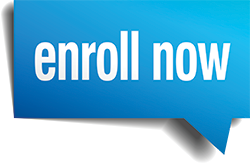Working as a health information technician, sometimes called a medical billing specialist, is a challenging, rewarding, and stable career. The role requires you to assist clinicians through administrative support. You’ll be responsible for communicating complex health data to insurance providers and collaborating with other administrative staff to obtain reimbursement for services offered by the medical facility.
Successful health information technicians need a comprehensive understanding of anatomy and physiology. You can only complete your tasks if you can effectively interpret medical records. Attending a vocational school is the best way to learn the clinical knowledge to work as a HIT. ATA College courses teach the science needed to read medical records, develop the skills to create invoices, and sharpen research skills.
Learn Why Does a Health Information Technician Need to Know Anatomy?
Health information technicians must be able to read and understand medical records to determine the appropriate coding and generate bills for clinical services. Medical records are highly detailed documents encapsulating everything during a doctor’s appointment or procedure. You will use highly specific coding and terminology because patient safety depends on clarity.
Health information technicians must understand anatomy to create accurate invoices that reflect the services offered in a medical facility. Bills with adequate documentation are accepted and allow payment. Your knowledge of anatomy and ability to interpret medical records will help you apply proper codes on the initial invoice. It also enables you to understand any denials and research ways to appeal.
What Types of Anatomy Do You Learn During a Health Information Technician Program?
ATA College designs our health information technician programs to provide you with the knowledge you need to thrive in the workplace. The curriculum includes in-depth instruction on anatomy and physiology, so you’ll be able to effectively read medical records, discuss them with fellow billers and clinicians, and translate them into billable codes.
1. Body Systems
Before you can apply codes, you must understand the parts of the body and the interconnected organ systems necessary for its function. The integumentary, muscular, skeletal, circulatory, nervous, lymphatic, respiratory, endocrine, digestive, urinary, and reproductive systems are reviewed during vocational training.
Learning about these body systems enables you to understand the criteria for medical necessity for billable codes and confirm diagnoses justify the ones you choose. Depending on your employer, you’ll handle medical records for a specific clinical department, general practitioners, or an entire facility. You must be familiar with all aspects of human anatomy to succeed.
2. Coding Protocols
All submitted bills must use codes from the Current Procedure Terminology (CPT-4), Healthcare Common Procedure Coding System (HCPCS), and International Statistical Classification of Diseases and Related Health Problems (ICD-10) indexes. This language allows you to translate complex diagnostic data into easily read codes.
Understanding anatomy and physiology is fundamental to choosing the correct codes. Bills must be consistent with the documentation on file. It would help if you had both clinical knowledge and attention to detail to consistently choose codes that correspond to the examinations and procedures performed by the clinician.
The breadth of possible billing codes and the rarity of certain conditions make it impossible for anyone to retain the entire catalog of codes. ATA College teaches you to research codes efficiently using manuals and electronic resources. Honing your investigatory skills is vital to thriving as a health information technician and proving your resourcefulness.
3. Medical Terminology
Medical terminology derives from Latin, scientific words, and historical precedence. Many of the terms are constructed using roots, suffixes, and prefixes. This layered word design allows physicians to use single terms to identify complex and specific body parts, diseases, and conditions.
Learning medical terminology is like learning a second language. Vocational training will teach you to deconstruct terminology as you read. You’ll be able to effectively comprehend what the doctor is communicating by breaking down the roots, prefixes, and suffixes.
What Does a Health Information Technician Do?
A health information technician may complete multiple tasks that keep the medical billing cycle in motion. Healthcare facilities and physician’s offices can only continue treating patients if they obtain reimbursement. Securing payment is an established process with many rules and regulations.
All submitted claims must have accurate and contemporaneous documentation. They also must be coded into the standardized billing language. Health information technicians interpret healthcare data to help doctors and insurance providers communicate.
1. Transcribe and File Medical Information
Health information technicians are responsible for transcribing and maintaining medical records. Depending on your employer’s policies, records are kept as paper charts, within electronic medical record software, or as a hybrid of both. You will review charts for completeness, checking for dates, signatures, and the presence of each component of a full record. You may also scan and upload paper charts to an electronic system.
Physicians may dictate their chart notes. You will transcribe the recording by ear or by using specialized software. You then review the transcription for accuracy and obtain the necessary clarification to complete the chart. You will then return records to clinicians for signature and move them on to the next step of the billing process.
2. Manage Electronic Health Records
Healthcare software streamlines the medical record process and ensures accuracy. These records must also be reviewed for signatures, dates, and full documentation. Health information technicians refer incomplete records to medical assistants for supplemental documentation or correction.
Health information technicians must also access medical records for quality control, continuity of care, and research tasks. You may work alongside your facility’s quality assurance and compliance department to conduct audits to ensure clinicians meet the required standards. You are also responsible for collecting, copying, and transmitting patient data when an authorized physician requests documentation on a patient’s case.
The job may also involve working with researchers and investigators conducting studies on a patient population. You may pull relevant clinical data and compile notes for this research.
3. Interpret Healthcare Data and Code Bills
Health information technicians also read medical records to determine the examinations, tests, and procedures performed. You must interpret the diagnosis to ensure all necessary information to support the claim and reasons for medical necessity are present. This verification process requires a thorough understanding of clinical pathology, anatomy, and physiology.
Once you have interpreted the record, you will generate a bill by translating the clinical information into alphanumerically coded data. Insurance providers use these codes to identify the payable aspects of the claim. Solid knowledge of anatomy and physiology enables you to code bills efficiently because you can read medical records faster while maintaining accuracy.
4. Diagnosing Rejected Claims and Responding to Denials
Firmly established policies govern the billing process and outline required documentation for covered services. Insurance providers can reject claims for inadequate records, erroneous coding, or procedural missteps by the health information technician. Insurers will issue a written denial explaining their decision.
Health information technicians must read and interpret the denial to determine if it is justified. If it is, you must then take corrective action to obtain reimbursement. You will collaborate with other billing specialists, research insurance policies, verify the use of codes, and obtain supporting documentation from clinicians to submit reconsideration appeals or re-bill.
5. Track Outstanding Claims and Payments
Bills, payments, and denials constantly pass between healthcare facilities and insurers. You are responsible for overseeing the outgoing invoices to confirm receipt by the insurer, monitor the timeline for transmission of denials, and verify delivery of incoming payments.
Healthcare billing has strictly defined intervals for bill submission to insurers and responses to the technicians by the insurers. You must closely track the dates of outstanding bills to ensure claims are not lost in the exchange between the medical facility and the insurance provider.
6. Educate Others About Documentation
Health information professionals must collaborate with multiple clinical and administrative departments in their facilities. Only properly documented services can be billed. You will educate your peers from other departments on the HIPAA and regulatory standards necessary for complete medical documentation.
Insurance plans evolve as reasons for medical necessity change and new procedures emerge. As a result, you may be asked to conduct in-services for new hires and refresher courses for long-term employees. You must also stay aware of new policies and revisions to the coding protocols.
How Do You Become a Health Information Technician?
An easy path to a successful career as a health information technician is to attend a vocational school. ATA College offer HIT programs catered to students who want a path to stable employment. Programs can be completed in as little as eight months if attending classes full-time.
We build our curriculums with the workplace in mind. ATA College streamlines our instruction to provide you with the necessary knowledge and the practical skills to succeed. Your instructors will have the best educational techniques to help you learn the necessary anatomy and medical terminology while grounding the course in its applicability to health information technology.
Beyond preparing you for your career, ATA College positions you for success on certification examinations, including the Certified Electronic Health Records Specialists (CEHRS) and Certified Billing & Coding Specialist (CBCS) tests. Obtaining these qualifications will open greater job opportunities and make advancing your career easier.





